At Mazda, the launch in Portugal of the MX-30 R-EV, a new plug-in hybrid version already available for sale in Portugal starting at €40,297, in addition to the electric model introduced in 2021. So, goodbye anxiety associated with limited range: 680 km instead of just 200 km!
The beginning of Mazda’s history dates back to 1920, but the Hiroshima-based company only produced its first car, the R360, in 1960. Shortly thereafter, surely to differentiate itself in an increasingly competitive industry, and inspired by a European model, the NSU Ro 80, the brand developed the formula developed by German Felix Wankel in the 1950s: in 1967, in the Cosmo Sport, it introduced the rotary engine (in its curriculum, victory in the 1992 edition of the 24 Hours of Le Mans, with the 787B).

Mazda has accustomed us to the production of different cars, often by resorting to differentiating technologies. It proves it once again with this investment in a mechanics with a reputation that is not consensual, due to the overlap of the disadvantage of excessive gasoline consumption with the advantages of reduced capacity, compact dimensions, reduced weight, and high power. In 2012, with the end of production of the RX-8, technology was put on hold, waiting for the opportunity that would only arise now, in the R-EV version of the MX-30.
In this 4.395 m long SUV, the rotary engine with 830 cc, 55 kW (75 hp), and 116 Nm works as a generator that powers the 17.8 kWh lithium-ion battery, without ever intervening in the movement of the wheels. Here, this mission is entrusted to the electric motor with 125 kW (170 hp) and 260 Nm. In the series hybrid system, the electric motor, rotary engine, and generator are arranged in line and transversely under the hood. There is only one gear ratio. The MX-30 R-EV, compared to the fully electric version of the model (107 kW/143 hp and 271 Nm), is also faster. This is confirmed, for example, by the 0-100 km/h acceleration achieved in 9.1 seconds, instead of 9.7 seconds, even though it is a model with an additional 58 kg, due to having more components and equipment, including the 50-liter fuel tank, which promises up to 680 km of range.
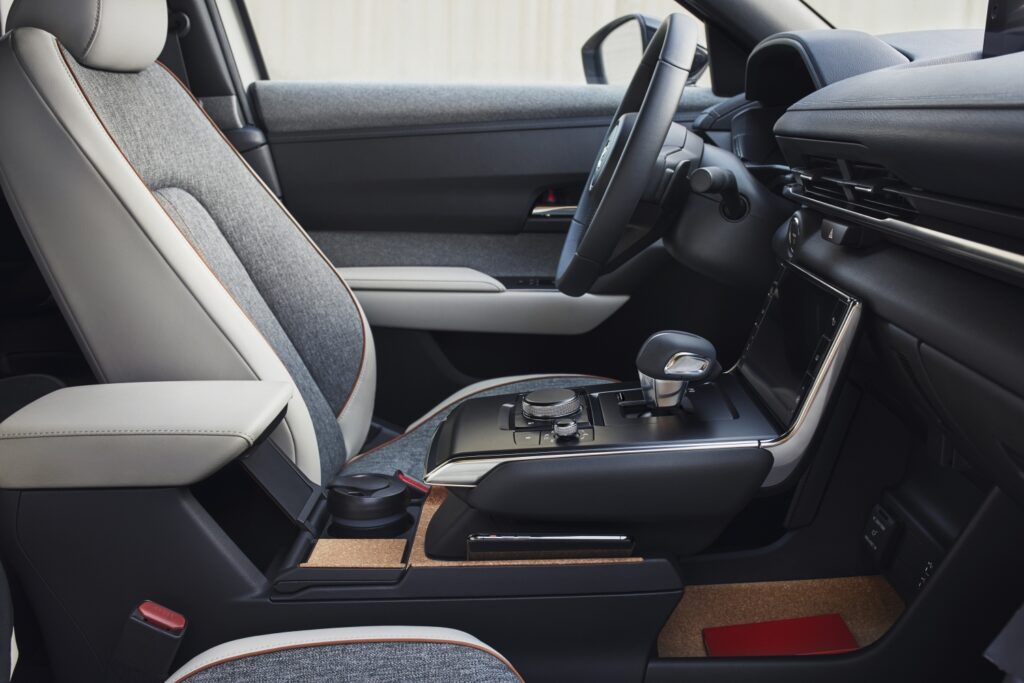
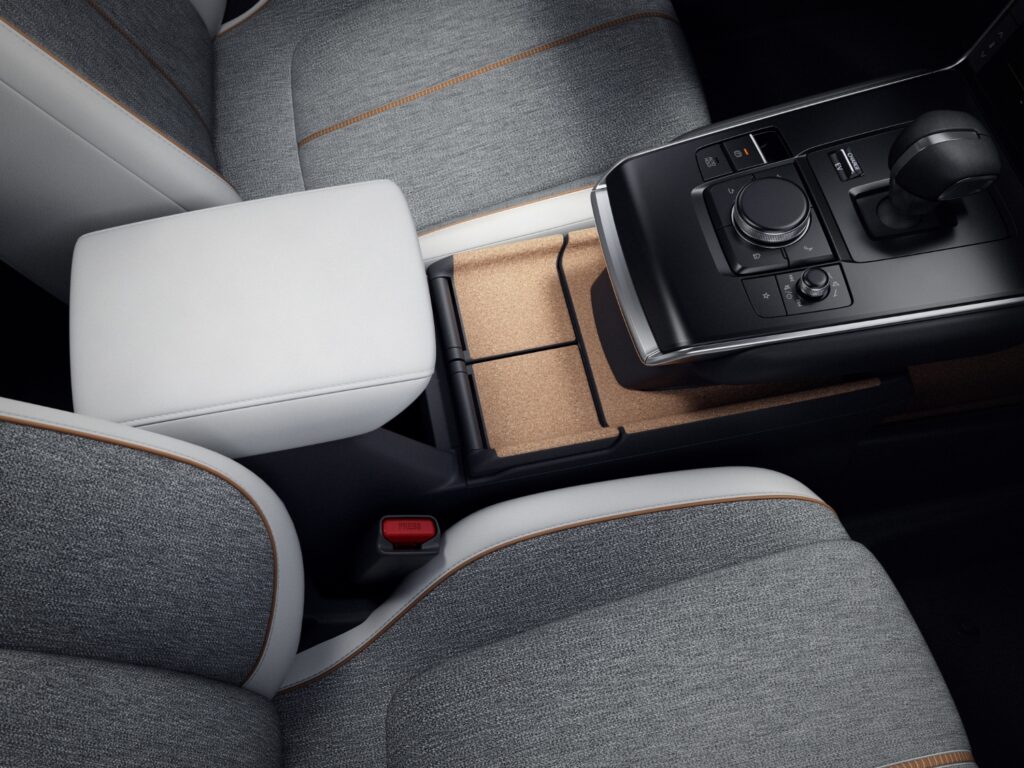
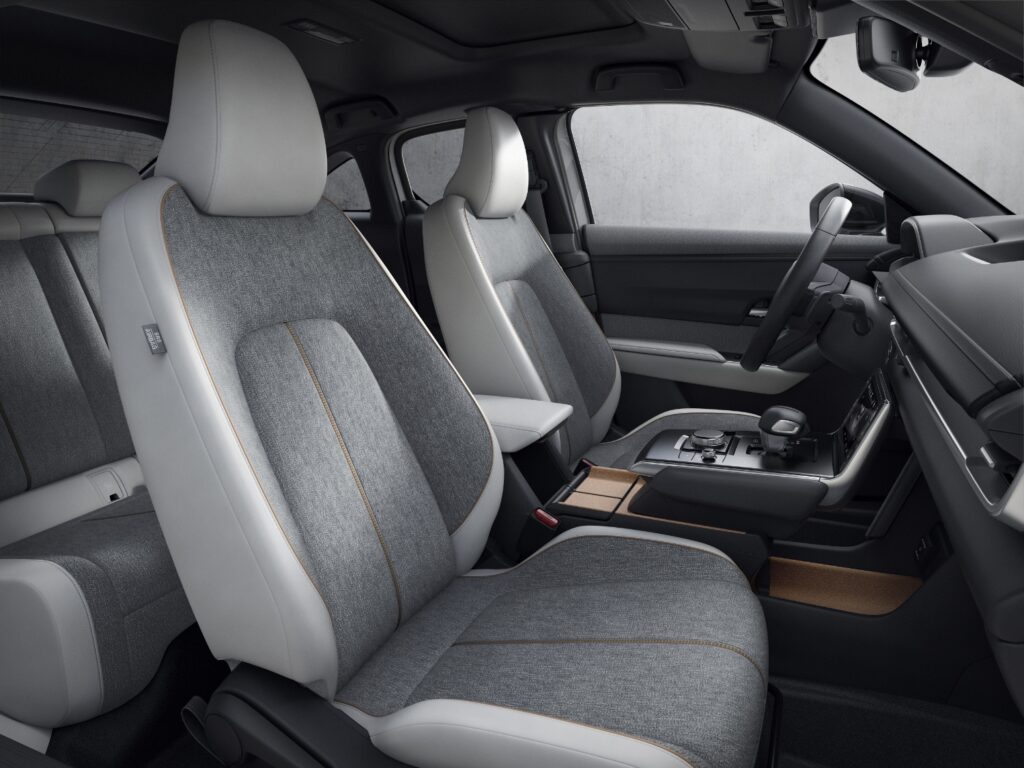
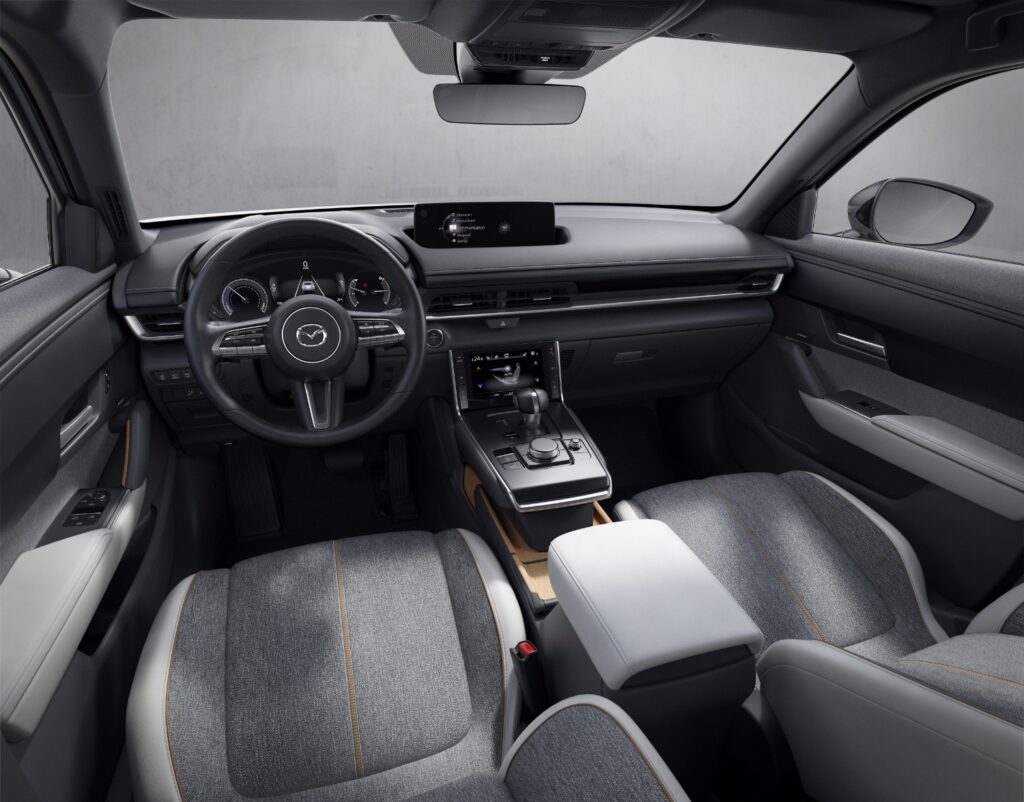
The MX-30 R-EV is classified as a plug-in hybrid. The technology is fiscally beneficial in Portugal, as PHEVs only pay 75% of the Vehicle Tax, are less penalized by the Unique Circulation Tax (lower CO2 emissions), and enjoy both purchase incentives and reduced autonomous taxation rates, making them much more attractive for companies. The launch almost coincides with Mazda’s campaign for the 100% electric version of the MX-30 (€26,900), which has a 35.5 kWh battery capacity and can only travel up to 200 km between charges, which is not much.
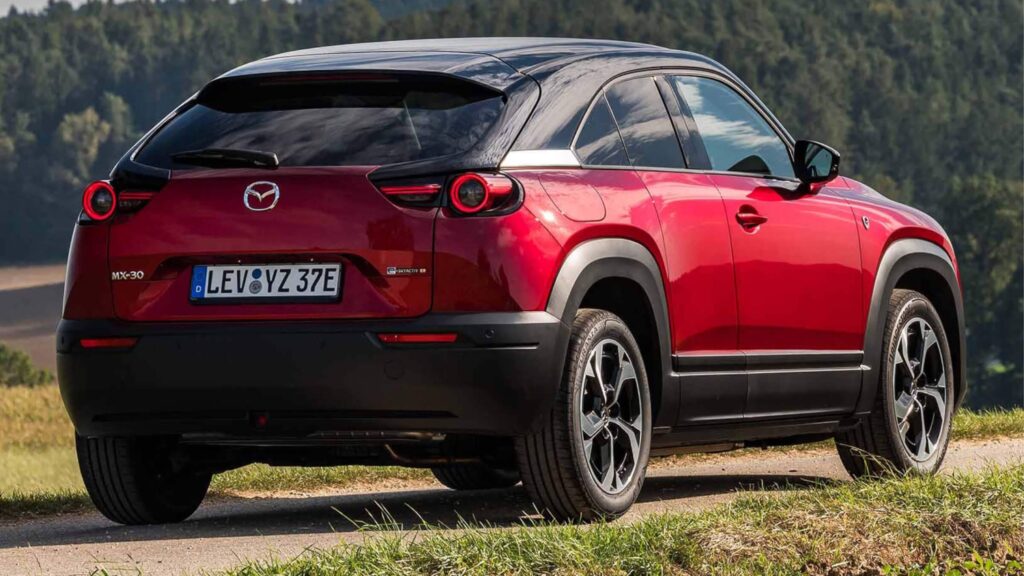
Essentially, including in the dynamic chapter, R-EV and EV are equal in virtues and defects – the latter stand out more than the former. The chassis has very fast and precise steering and suspension with firm damping, which optimizes control of movements in weight transfers during curves, without penalizing comfort or smoothness of ride.
The PHEV maintains instant response to the accelerator pedal and can travel up to 85 km with the rotary engine off! Whenever the energy accumulator’s charge reserve is below 45%, the generator comes into play to produce electricity. The Wankel engine is only heard in Charge mode or when more system capacity is required. There are two more driving programs (EV and Normal) and paddle shifters on the steering wheel to adjust the level of energy recovery during deceleration and braking.
The maximum charging power of the R-EV is 36 kW (direct current), which allows for 0%-80% storage recovery in 25 minutes. Alternatively, with 7.2 kW, the battery can be fully charged in an hour and a half. At the top of the MX-30 PHEV range is the special Edition R version, with distinctive details and exclusive equipment, priced at €46,427.







